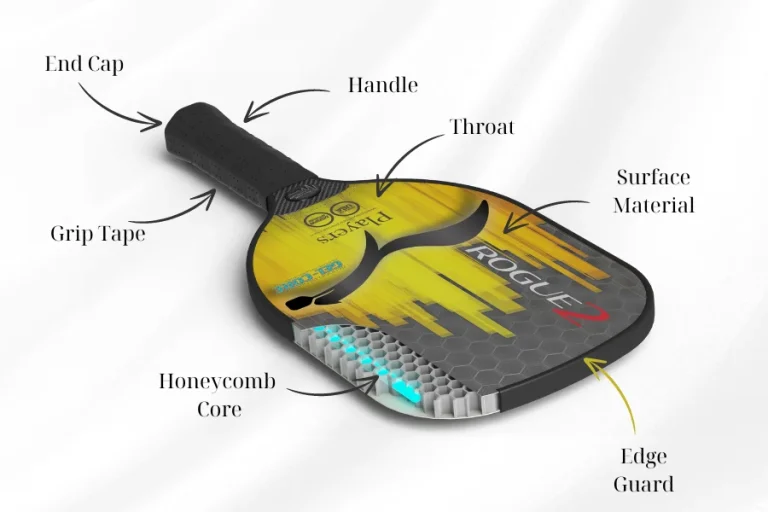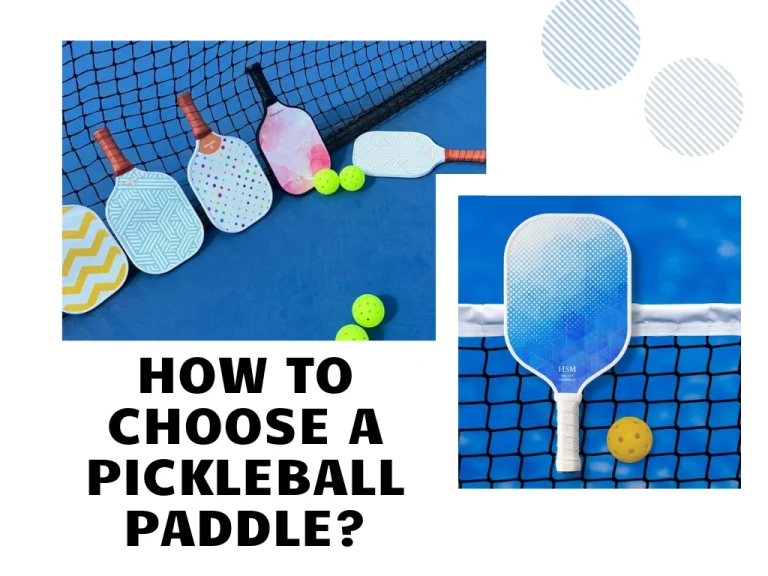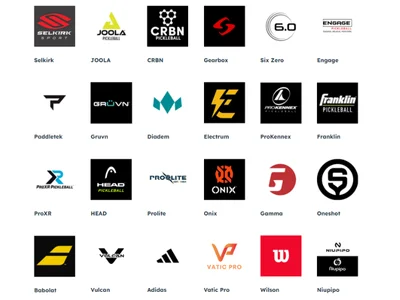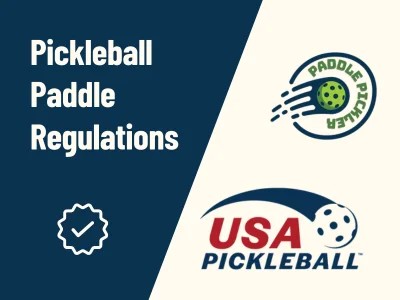Have you ever wondered why there are so many different pickleball paddles that have different thicknesses? Does this thickness impact the way you can perform? The pickleball paddle thickness has a direct impact on your gameplay and performance, from power and control to the general sensation of the paddle. This article will look at the various thicknesses available and their impacts, assisting you in finding the ideal paddle for your playing style.
Key Takeaways
- The thickness of a paddle is often divided into three ranges: thin core (≤14mm), medium core (≈ 15mm), and thick core (≥16mm).
- Thinner paddles have more power and speed, while thicker paddles have better control and a larger sweet spot.
- The performance of medium paddles is well-balanced. The 14mm paddle can be seen to offer an outstanding mix of force and control.
- Thicker paddles often have a larger sweet spot and greater forgiveness on off-center shots. For players who desire consistent performance, they are perfect.
What Is Pickleball Paddle Thickness?
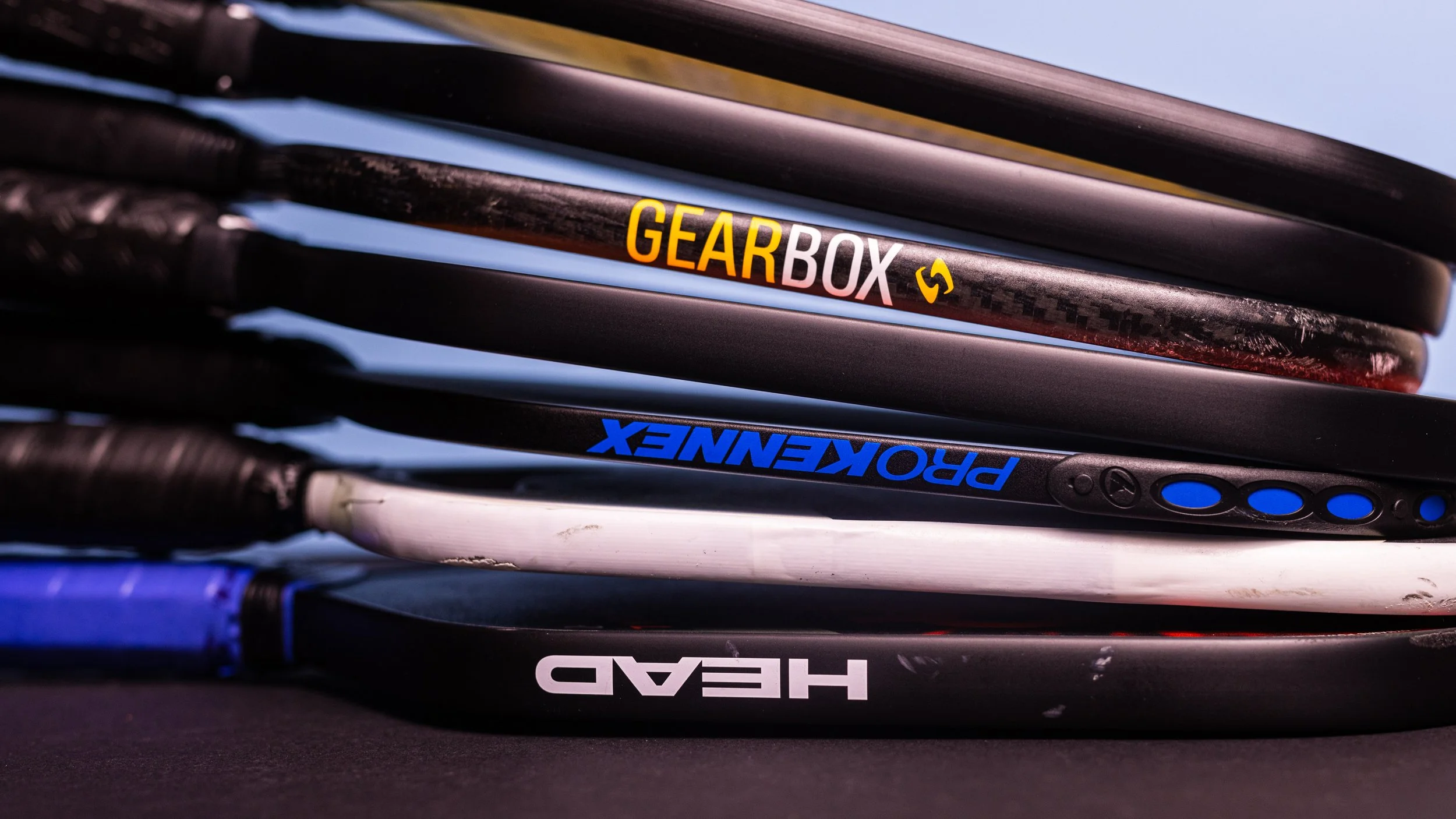
Pickleball paddle thickness measures the paddle’s core, typically in millimeters. This thickness plays a crucial role in determining the paddle’s overall performance. It influences factors such as control, power, and feel. This number represents the thickness of the paddle core (the part made from Nomex, polymer, or Aluminum) excluding the thickness of the surface materials.
Most pickleball paddles fall within a thickness range of approximately 8mm to 20mm. Paddles on the thinner side offer enhanced power and speed, while thicker paddles focus on providing greater control and a larger sweet spot.
The thickness of a paddle has a close relationship to its core material. Polymer cores are common in medium to thick paddles, offering extra control and a softer feel. Nomex or aluminum cores, often in thinner core, increase power and responsiveness. The core material and thickness mixture determines the equilibrium between control and power in a paddle.
Types Of Pickleball Paddle Core Thickness
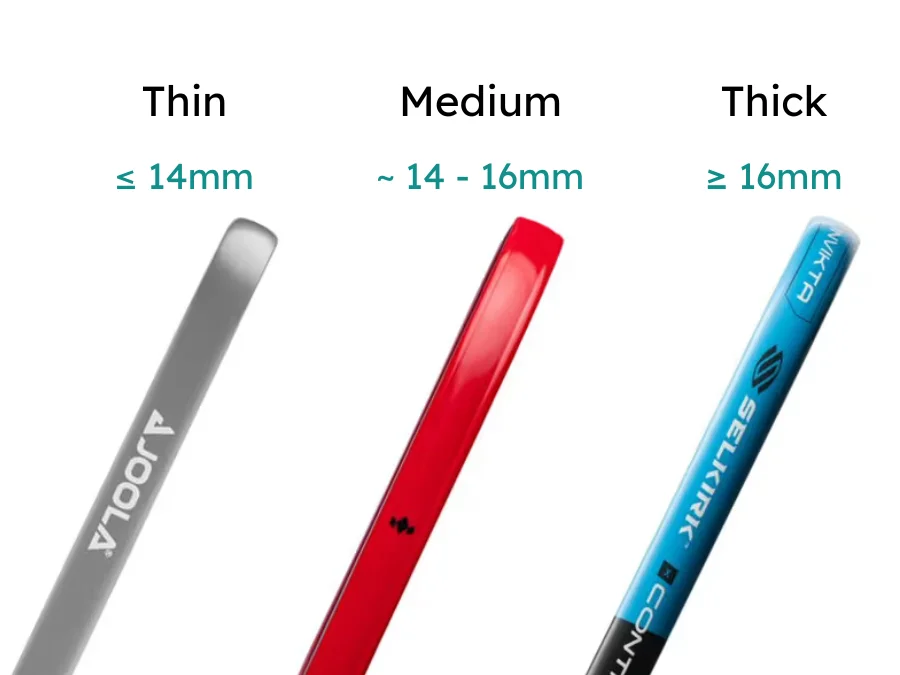
Pickleball paddle thickness is categorized into three types: thin core (≤14mm), medium core (between 14mm & 16mm), and thick core (≥16mm). The thickness influences the paddle’s responsiveness and playability—thinner paddles deliver more power and speed, while thicker paddles offer greater control and touch.
Thin Core (less or equal to 14mm) For Power & Strength
Thin paddles are those with a core thickness of 8 to 14 mm. They are designed to offer maximum power and speed. The reduced thickness means there is less material to absorb shock. This contributes to a lighter weight and faster swing speed. The thinner core allows more direct energy transfer from the paddle to the ball, resulting in powerful shots. However, this design may have a smaller sweet spot and reduced control and durability.
Performance
- High Power Output: Enhanced power and speed due to reduced thickness.
- Faster Swing Speed: The reduced thickness allows for quicker swings and faster ball speed.
- Reduced Sweet Spot: Fewer forgiving of off-center hits.
- Increased power and speed
- Lightweight and easy to maneuver
- Quick response time
- Reduced control and accuracy
- Smaller sweet spots can affect consistency
- Less forgiving on off-center shots.
Who should use thin core thickness?
For players who want to focus on speed and force in their game, thin core is suitable. They are great for those who have mastered good control but need a more powerful paddle. These paddles may not be the greatest option for novices or those who desire balanced performance.
Pro Tip: If you want the thinnest paddle with the greatest power and speed, consider an 8mm paddle like the Diadem Hero or Franklin Sports Jet Aluminum.
Medium Core (between 14 & 16mm) For Balance
Medium paddles, with a thickness of around 15mm, strike a balance between the extremes of thin and thick paddles. These paddles offer a harmonious blend of power, control, and forgiveness.
Nevertheless, there aren’t many paddles with this thickness available right now. Instead, people often wonder about 13mm vs 16mm paddles or 14mm paddles. If you want to experience the 15mm paddle, you can refer to the VERSIX Pro 6C product.
Performance:
- Balanced Power and Control: Offers a good mix of strength and precision.
- Moderate Swing Speed: Provides a stable yet responsive feel during play.
- Versatile Sweet Spot: More forgiving on off-center hits than thinner paddles.
- Good balance of control and power
- Larger and more consistent sweet spot than thin paddles
- Good versatility for different play styles
- May not excel in either extreme power or control
- Slightly heavier than thin paddles
- Might lack the specialization of thinner or thicker paddles
Who should use medium core thickness?
Mid-thickness paddles are ideal for all-round players who want a paddle that provides a balanced performance. It offers a good compromise between speed, power, and precision. They are suitable for those who enjoy a mix of power and control without leaning too heavily in either direction. These paddles are great for intermediate players looking to improve their game.
Thick Core (more or equal to 16mm) For Touch & Control
Thick paddles, generally 16mm or more thick, even up to 20mm. They are designed to prioritize control and touch sensation. These paddles often feature a dense core material, such as polymer or foam, that enhances stability and maximizes shock absorption. The increased thickness provides a larger sweet spot and better forgiveness on off-center hits. The thicker construction also creates a solid, stable feel while playing games.
Performance:
- High Control and Precision: Focus on precision and touch over power.
- Larger Sweet Spot: Offers forgiveness on off-center hits, improving consistency.
- Reduced Vibration: Provides a stable and solid feel, and reduces pressure on hands during long-term play.
- Superior control and touch
- Large sweet spot, forgiving for off-center hits
- Enhanced stability and durability
- Heavier weight can lead to fatigue
- Less power and speed than thinner paddles
- Can be less maneuverable, especially in fast exchanges
Who should use thick core thickness?
For control-oriented players, thick paddles are perfect. They are suitable for players who prefer a slower-paced game with a concentration on precision and consistency. Players who struggle with off-center hits or prefer a more stable paddle will benefit from thick paddles due to their larger sweet spot and superior shock absorption.
Pro Tip: If you want the greatest paddle in terms of feel and touch, you may try a 20mm paddle like the Selkirk Labs Project 003 or Selkirk LUXX series.
Is It Preferable To Have A Thinner Or Thicker Pickleball Paddle?
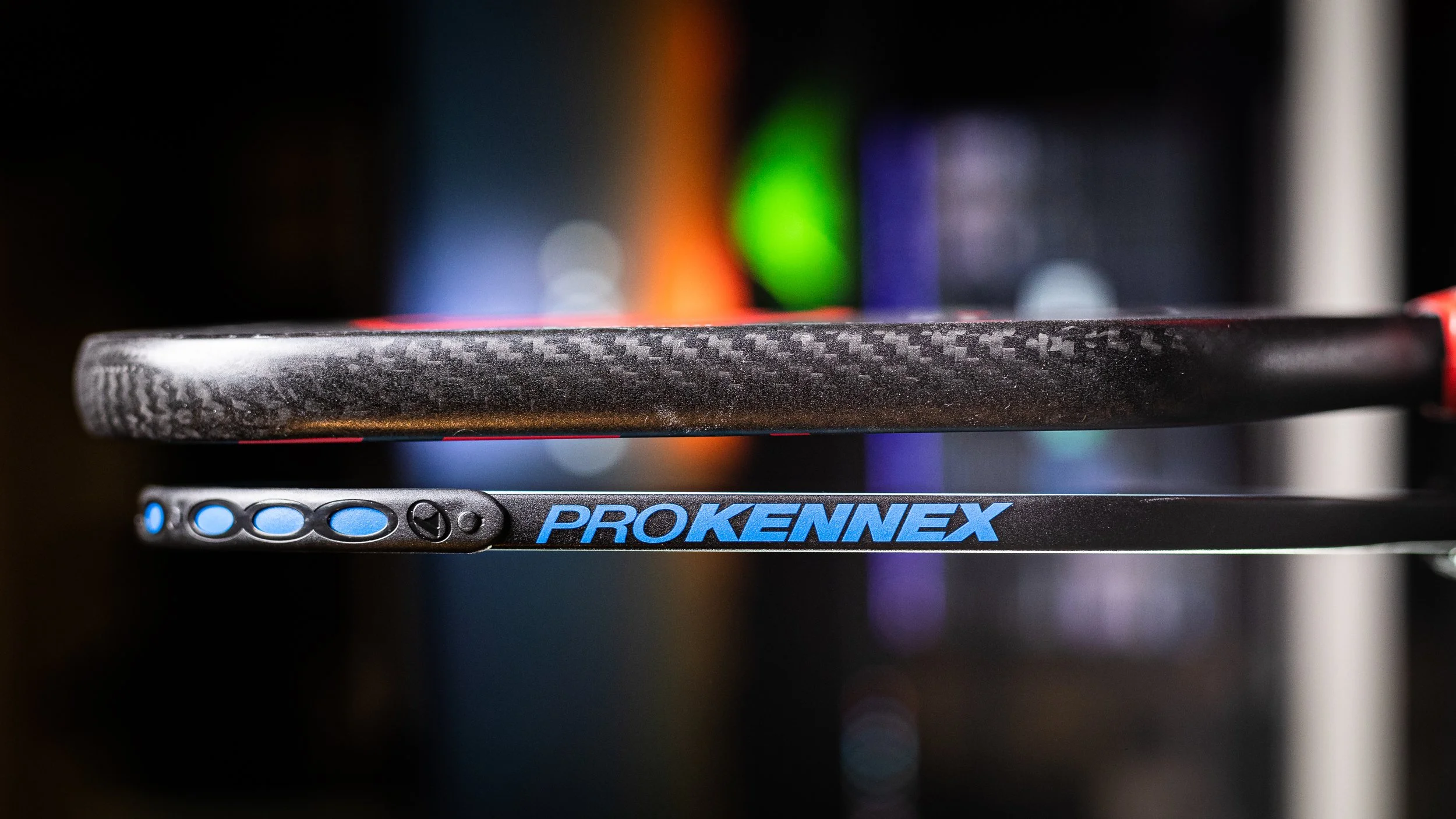
Through Ask A Pickleball Pro, I usually get some question related to core thickness of pickleball paddle such as:
- “Should I choose 13mm vs 14mm pickleball paddle?” – Mike J.
- “13mm vs 16mm pickleball paddle, which pickleball paddle thickness is better?” – Jayson D.
- “Or Should I choose a thin or thick pickleball paddle?” – Tom H.
The choice between a thinner paddle and a thicker paddle is altogether up to your playing style and personal preferences. Better power is produced with thinner paddles. Lower material thickness enables faster force transmission from your shot to the ball, increasing its velocity and power. On the contrary, the thicker the paddle, the greater the control.
You will notice the difference in the thicknesses of a paddle through the sensation of the ball when using a paddle. Balls will strike a thin paddle faster and with a harsher touch. A thicker paddle will feel softer, and contact between the ball and the paddle will last a bit longer.
The performance of the paddle, based on my gameplay and testing time, becomes less dependent on thickness and more on the paddle’s weight, core material, and surface material. Therefore, it is important to weigh and combine various aspects, including grip size, handle length, material, weight, and racket shapes, while selecting an appropriate paddle.
The theory presented above may be relative, yet it is valid in the majority of situations. I have tried lots of thick paddles through testing process, and they generate more power than some medium core thickness paddles. You should consult data from the product’s official brand to learn more precise details about the performance measurements of the paddle.
How Thick Should Your Pickleball Paddle be? – Tips
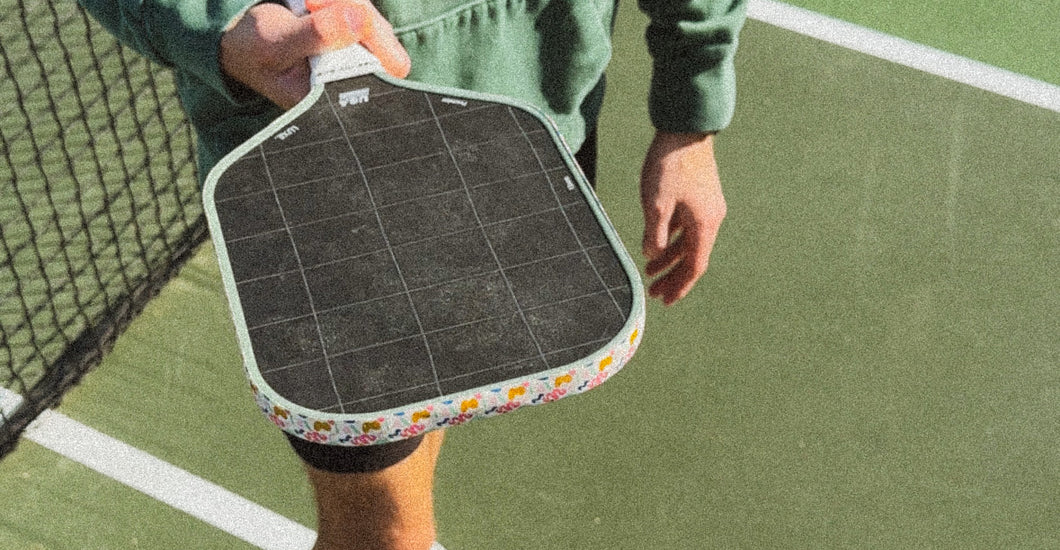
Having played pickleball for a long time and have gained significant experience. I think these will be quite helpful to you. You can consult them to help you figure out what’s appropriate.
First, Don’t focus too much on thickness. Thickness is only one of several parameters that influence a paddle’s performance. Aspects like material, weight, and design are also crucial. Above all, you have to have confidence and comfort in your ability to use the paddle.
Second, Experimentation is essential. Try out as many paddles as you can to determine which paddle is best for you. Each person will have different feelings about the same paddle.
Third, If this is your first time, start with 16mm. If you have not tested many and know what works best for you, go with the 16mm. You’ll be able to improve your skills with simpler shots.
Fourth, Lead tape for thick paddles. If you like a thicker paddle but don’t have the necessary power, you can try adding lead tape to make it more powerful. This method worked well for me when I tried it.
In Summary
Pickleball paddle thickness is one of the aspects that influences the paddle’s effectiveness and your ability to perform on the playing court. Understanding your level and playing style is the first step towards figuring out thickness. Thinner paddles are more about power and a solid feel, whereas thicker paddles are more about control and precision.
A paddle is appropriate for you if it enhances your areas of weakness and highlights your strong points. Hoping that this article will help you choose an excellent partner on the pickleball court.


